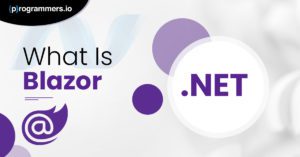All You Need to Know About Security with ASP.NET
ASP.NET is rated among the best technologies for developing amazing web apps and mobile apps. A number of applications today are tested and developed within the ASP.NET ecosystem and have shown immense room for growth and development.
Security is an important feature for any web application today, especially those that have sensitive user information related to their finances, security and other aspects. The development tool used for developing a web solution should ensure that the security features on the application are comprehensive and there is no shortage of proper equipment for users. Developers and programmers should choose web app development platforms based on the security they offer and the features they provide.
Read – Reason to Use ASP.NET Web Development
In this article, we take a look at security features in place within ASP.NET development. The programming solution has come a long way and offers comprehensive security to users. The features offered by them are based on the following categories:
- Authentication
- Configuration
- Data Access Security
- Code Access Security
- Exception Handling
Authentication
The process of authentication is meant to check and identify whether a user logging into the application is registered or not. ASP.NET identifies the role of authentication in security, which is why it offers two types of authentication processes:
- Forms Authentication
- Windows Authentication
Windows Authentication is the simpler method to employ, as it stores all user names and passwords within an active directory. The passwords are encrypted and safely stored in the directory.
Forms authentication is different to windows authentication, as the passwords and user names are stored within a configuration file on a database. All credentials are provided by the user, which are then validated against the credentials stored within the database.
All programmers and users should consider the factors below before implementing forms authentication on ASP.NET:
- The built-in class MemberShip directory by ASP.NET should be preferred over your own logic to validate username and passwords.
- SSL should be used for sending credentials through your network.
- Session time out should be reduced.
- Passwords that are stored in configuration files should be encrypted so that they don’t attract threat actors.
- The organization should enforce a policy of strong passwords. The stronger a password, the harder it is to infiltrate.
- Authentication cookies should never be used, as they are stored in the profile and can be stolen.
Configuration
Developers can use plenty of configuration modules on the web app they prepare with ASP.NET Architecture. These configurations are necessary for an application to perform well and ensure that security is top notch and isn’t compromised by any means.
A connection string can be configured to store passwords and user data. The connection string should be saved in an encrypted form, so that it cannot be accessed by any threat actor. All configuration strings can be encrypted through a command present on the ASP.NET editor.
You can also decrypt the connection string using a different command. The modifications in the string will help save your configurations in a safe manner. Configuring your web app for security with ASP.NET can be fun, as there are plenty of opportunities to play with.
Data Access Security
Data Access Security is another facet of the security features provided by ASP.NET. We recommend data access security because it unauthorizes all illegal access to the database of the app. Hackers can inject harmful code within the database and sell data present on it to hackers illegally. All data should be validated in a proper manner before it is submitted to the backend of an application.
All data securities can be checked through the following process:
- The data present in your database should be validated for both input, length and format before you carry on any processes on it.
- You should use expressions to validate data.
- Dynamic queries generated through data from users should be restricted.
- You can use stored procedures over batches of queries.
- Roll back your data if an error occurs.
- Create window accounts that operate with minimal permissions
Code Access Security
Code access security is meant to restrict the access of external actors to system resources stored within the organization. The restrictions are usually independent of who is handling the code. The following guidelines can be implemented while using code access security on AS.NET.
- If your web app utilizes managed code, then you can limit its exposure to security attacks through a web configuration code.
- The trust level developers set for their application shouldn’t exceed the requirements it has. You can utilize the permission calculator tool provided by ASP.NET.
- All users should utilize the Medium Trust tool within shared networks.
- Developers can use health monitoring and other auditing tools in ASP.NET to check the sensitivity and authenticity of tools.
- Code access security can be boosted by following steps within the app.
Exception Handling
Exception handling is also a security function that most organizations require today. ASP.NET gives organizations the opportunity to handle exceptions in a timely manner at once. The Global Application Error Handler present in ASP.NET can manage all applications at one time and can provide a simplified solution. You can find sample codes for the Global Application Error Handler online and utilize them for the process.
We hope this article helps all developers and programmers find the best route towards system and web app security on ASP.NET. The comprehensive security guidelines mentioned here are part of ASP.NET and can help you get the best results.










